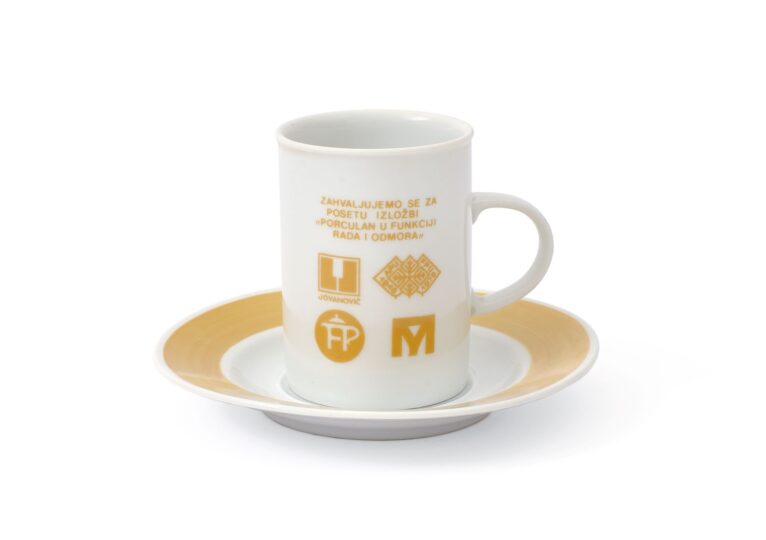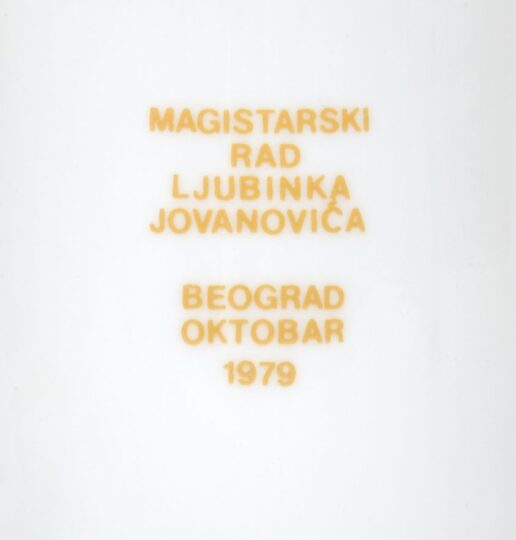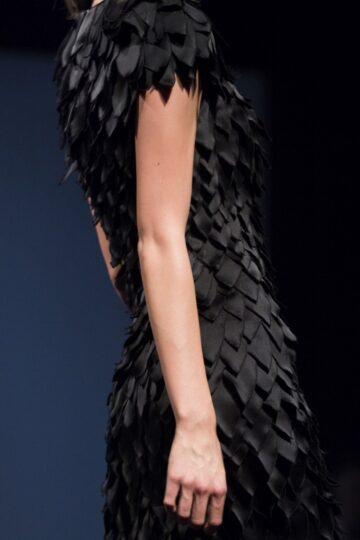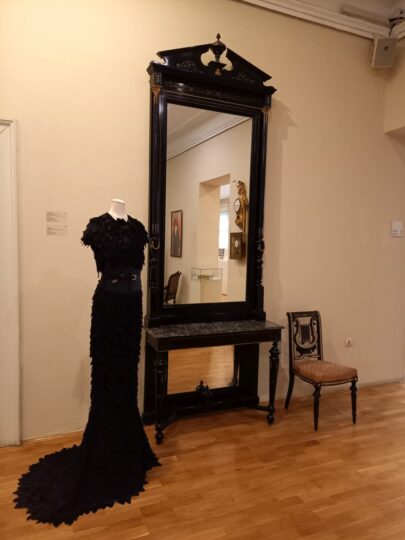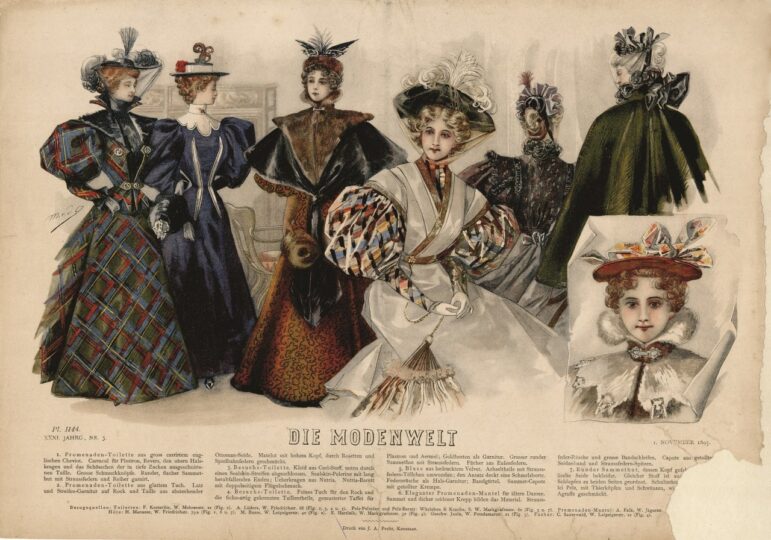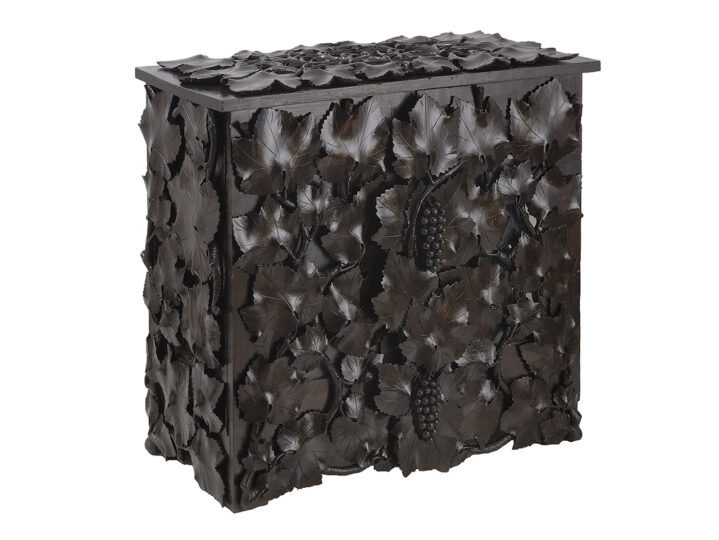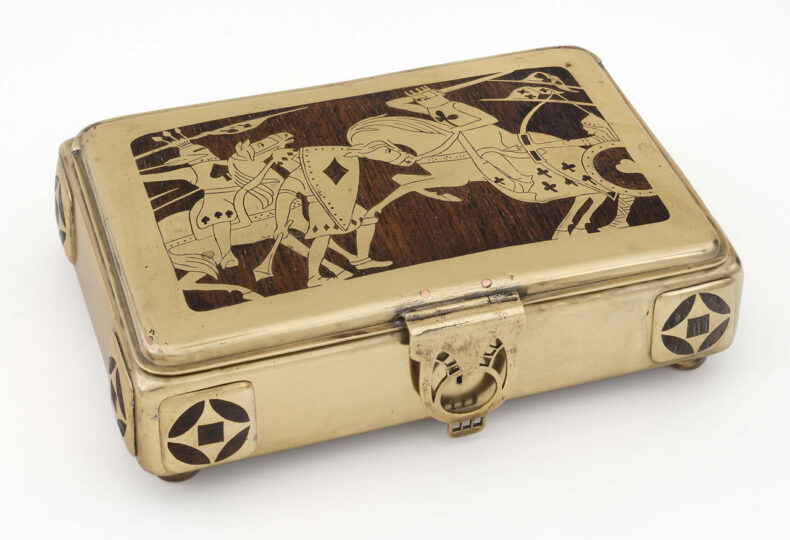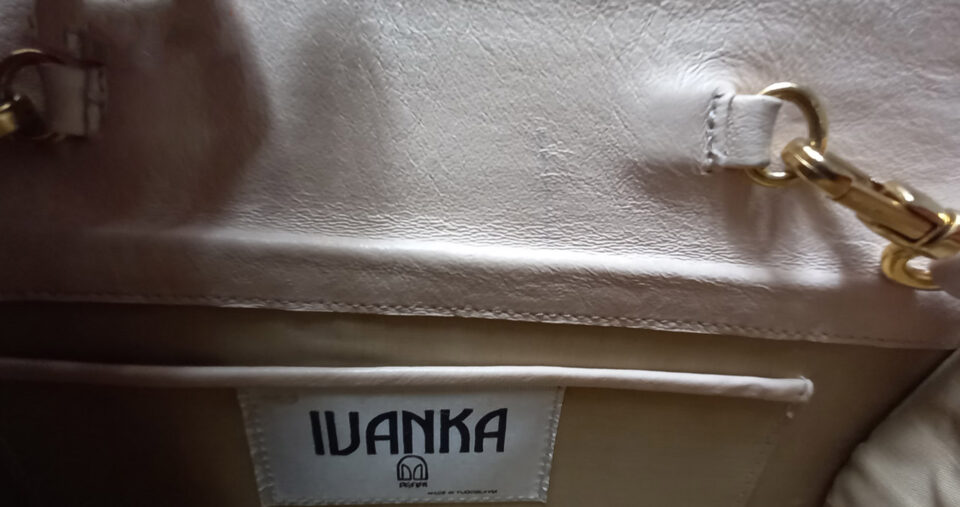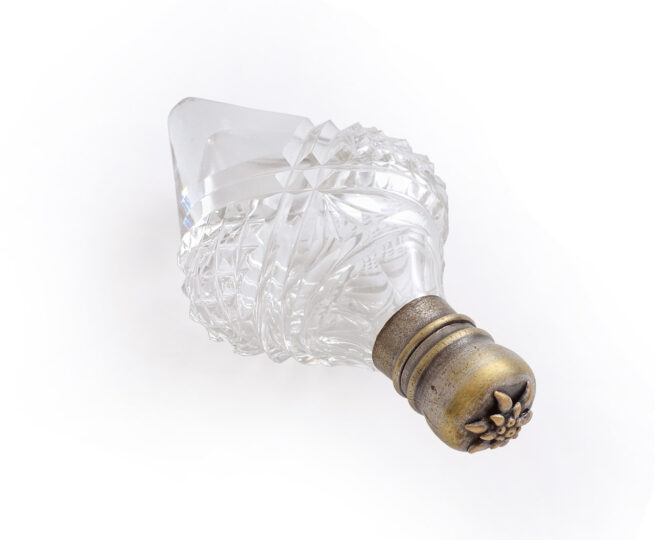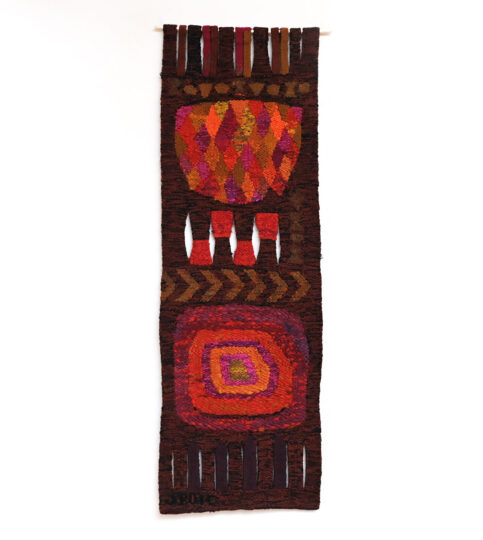OBJECT OF THE MONTH, FEBRUARY 2024.
OBJECT OF THE MONTH, DECEMBER 2023.
The Midnight Butterfly collection was presented by invitation at the Fashion Institute of Technology (Аrt Fashion Department) in New York City, as well as at fashion shows in Shanghai in 2018 and in Belgrade in 2019.
The dress and a wide belt made of anaconda skin, which put the finishing touches to the model at some fashion shows, have become part of the museum collection in October of this year.
OBJECT OF THE MONTH, NOVEMBER 2023
The German magazine Die Modenwelt: die Illustrierte Zeitung für Toilette und Handarbeiten (World of Fashion: An Illustrated Magazine for Fashions and Fancy-work) was one of the popular foreign fashion magazines in Belgrade during the last decades of the 19th and the beginning of the 20th century. The magazine, launched by publisher Franz von Lipperheide in Berlin in 1865, achieved great success, as it was published in different countries in as many as 14 languages. It had the largest circulation of all fashion magazines of the time and was sold even in Brazil.
For a long period of time, from the 1670s until the Second World War, fashion illustrations were an important segment of European fashion magazines, until fashion photography took precedence. The exhibited items belong to the collection of 33 fashion illustrations from the period between 1892 and 1898 which was given to the Museum in 2019 by the descendants of the famous Belgrade Sephardic trading family, the Kalef family.
OBJECT OF THE MONTH, OCTOBER 2023
The author of the poster that promoted the exhibition was Slovak sculptor Jovan Konjarek (Ján Koniarek). The basic idea of the exhibition, which also formed the essence of the art association „Lada“ – to accentuate general cultural advancement of the Serbian people – was expressed by the visual definition of the poster with central representation of laurel wreath and stylized motifs with national and Christian symbolism (the two headed eagle, the heraldic shield, the cross shapes formed by floral motifs), and, more explicitely, it appeared in the text that runs underneath this representation.
The poster is donated by Mr. Petar Petrović from Belgrade.
OBJECT OF THE MONTH, SEPTEMBER 2023
In addition to the usual autumn fruits and joys, this September you can also enjoy the object of the month at the Museum of Applied Art. It is a two-winged commode, an exceptional and rare example of furniture that was created in our climate, and whose authorship is known, as well as the exact dating.
The commode is a creative work of the artistic carpenter Radovan Pantić from 1878 and according to the will of Mrs. Radmila Gagović, whose wish was that this piece belongs to the Museum of Applied Art (which came true in 2015), it was created for the court of the Obrenović dynasty, and due to various historical circumstances, it found its place in the home of the Gagović family.
In addition to the almost sculptural carving with the motif of grapes and vines, what makes this commode, made of conifer and walnut, particularly significant are the carved initials of the artist “RP” on the inside of the right wing, as well as the year of creation on the upper surface.
OBJECT OF THE MONTH, JULY, AUGUST 2023
The finals of “Slagalica” have ended. The season of vacations and summer fun has begun, and what’s more fun than playing cards on the beach?
? The origin of playing cards is not known with precision due to the lack of reliable historical sources. It is believed that they probably originate from China as early as the 9th century or from some other Asian area, and that they arrived in Europe from the Far East, via the Near East, and spread there in the 14th century, in a more or less similar form we know them today, but through many different games. Throughout history, the number of cards in the deck, their appearance and symbols have changed depending on the era and geographical area, while great attention has always been paid to the artistic treatment and design of the cards. It was equally important to make and decorate a box for keeping cards.
? The card box that is kept at the Museum of Applied Art is a valuable specimen that was made in a limited number in 1910 in Jugendstil style, in the German factory “Erhard and Sons” specialized in the production of small items for home use and known for its skilled craftsmen metal processing.
⚔ On the lid of the rectangular box there is a dynamic battle scene of two opposing armies, led by four medieval knights, each with one of the four card symbols on their armor or shield: ♠ ♦ ♣ ♥. The scene was made using the incrustation technique on a palissandre board, from which the interior wooden parts of the box, as well as the details, are made, while the metal parts are made of brass with partially preserved gilding.
♥ The 4 signs we know from cards are considered to be universal today: ♥ ♦ ♣ ♠, originated in France and became standardized throughout Europe in the middle of the 15th century. However, even today there is a difference between the colors and suits of the cards, which in the past differed significantly depending on the area.
♦ Some researchers indicate that the earliest cards from the 14th century had figures borrowed from the social circles of the court: kings, queens, knaves, heralds, cupbearers, clerics, cooks, lackeys, fishermen, who were often ranked according to numbers. In the past, different animals such as lions, bears, falcons, hounds or objects such as helmets, armor, swords, money were shown on the cards. Some of the motifs were borrowed from tarot cards, and some, in reduced form, are kept even today.
♣ Today’s universal deck has 52 cards, 2 colors and 4 suits. The etymology of the names of all 4 signs, which influenced their meaning and symbolism, is very interesting. The Heart has the shape of a heart, and in the Anglo-Saxon world this obviously means heart, while in the Romanic languages the word “cup” (in Latin “tub”) is predominantly used for this sign, and a whole series of terms are derived from it: cup, goblet, vase (and if you wonder why the cup is the heart, remember Cupid). The Diamond has the shape of a rhombus or diamond, as it is called in some languages, while in the Romanic languages it is “denari”, which is a clear association with money in the Serbian language. The Club has the shape of a clover, a trefoil or a cross, however “baton” or “baston” means a stick. The Spade, apparently in the shape of a leaf, but actually as a symbol of a sword, alludes to “peak” (top) but also to “spade” (axe).
♠ The knights represented from left to right on the box from Museum of Applied Art somewhat follow this symbolism: the first horseman on armor and on a spear has ♠; the pawn, his companion in battle, has ♦, on his armor and shield, while carrying a rhomboid-tipped mace. Opposed to them in battle are a horseman in armor with a ♣ who runs into the heat of battle with his sword and an archer, who carries a large ❤ on his shield.
OBJECT OF THE MONTH, JUNE 2023
OBJECT OF THE MONTH, MARCH 2023
The miniature silver perfume bottle dating back to the late 19th and early 20th century is decorated with a motif of flowers in a cartouche, and it is closed with a metal, threaded applicator cap. The bottle, dating back to around 1900, is also small in size. It is made of ground glass, with a decorative metal cap, and it represents a typical female fashion accessory from this period.
The perfume bottles were preserved in the family of Radmila Popović Petković, PhD, (Belgrade, 1920–1976), an archivist and research associate at the Institute of History of the Serbian Academy of Sciences and Arts. In 2020, her daughter, Dragana Petković from Belgrade, donated these belongings to the Museum of Applied Art.
OBJECT OF THE MONTH, NOVEMBER 2022
The work of art was created at the end of the 60s of the 20th century, in the decade when tapestry became the primary creative area and technique of Jagoda Buić. It is characterized by an abstract geometric composition, accentuated by the texture of woven wool thread and delicately coordinated bright colors, as well as ‘incised’ parts that, as a matching element, introduce the surface of the wall on which it is displayed as a whole. The tapestry is some kind of mediator between the first stage of the author’s artwork and her mature work, which has brought her the halo of a world-renowned artist.
The Fiesta received an award from the 1969 Zagreb Salon, and was also presented in Buenos Aires, as well as at the Lausanne International Tapestry Biennale – at that time the most important manifestation of contemporary tapestry art.
Postscript It was in our Museum that Jagoda Buić exhibited her tapestries for the first time, to be more precise, in 1963 at the Contemporary Yugoslav Tapestry exhibition, which showed the scope of this then favorite artistic discipline practiced in Yugoslavia only during the past ten years. One decade later, Jagoda Bujuć was included in the circle of the most important tapestry artists in the world who had changed the perception of this medium.


